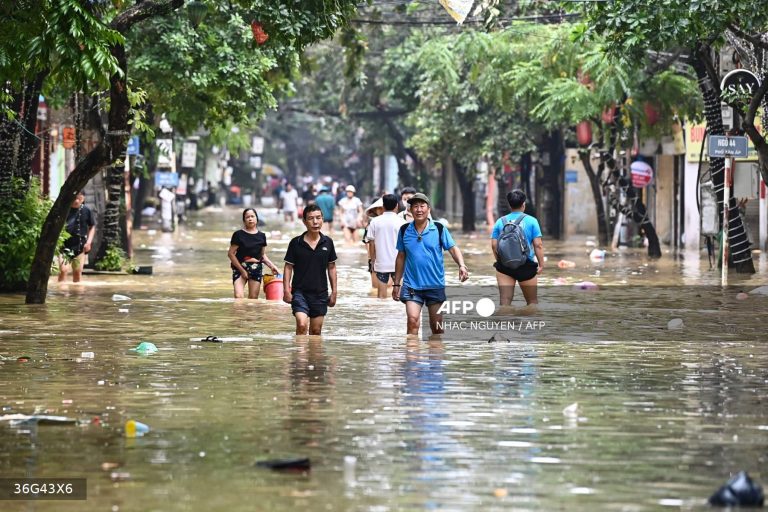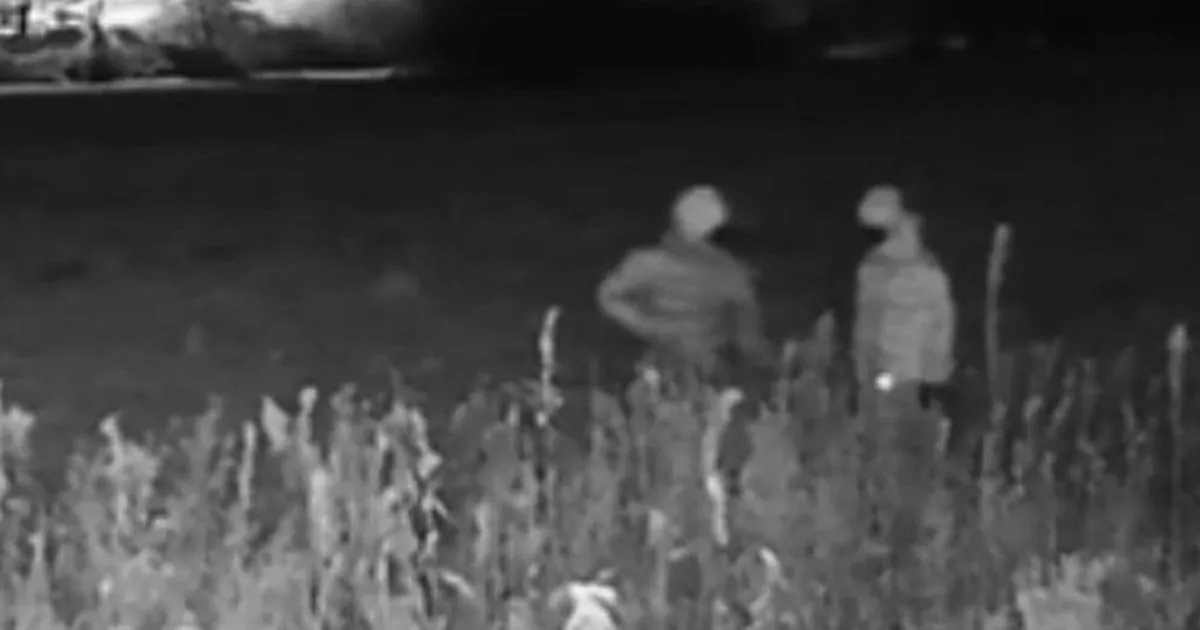In worst-hit Vietnam the fatalities rose to 197, with eight confirmed dead in northern Thailand — where one district is suffering its worst floods in 80 years.
Yagi smashed into Vietnam at the weekend, bringing a colossal deluge of rain that has inundated a swathe of northern Vietnam, Laos, Thailand and Myanmar, triggering deadly landslides and widespread river flooding.
One farmer told AFP his entire 1,800 square metre peach blossom plantation was submerged, destroying all 400 of his trees.
“It will be so hard for me to recover from this loss — I think I will lose up to $40,000 this season,” the farmer, who gave his name only as Tu, told AFP.
“I really don’t know what to do now, I’m just waiting for the water to recede.”
– Communications cut off –
The high waters have devastated more than 250,000 hectares of crops and huge numbers of livestock, Vietnam’s agriculture ministry said, with farmland around Hanoi hit hard.
Commuters in parts of the Vietnamese capital trudged to work through shin-deep brown floodwaters, though officials said river levels in the city are slowly falling after hitting a 20-year high on Wednesday.
Thousands have been forced to evacuate their homes, while others are struggling with power cuts, and in one badly hit district on the outskirts of Hanoi, more than 15,000 people have been affected by the floods.
Vietnamese state media said a landslide in mountainous Lao Cai province killed seven people with left 11 missing.
The incident happened on Tuesday but details have only just got through because communication with the area was cut off, officials told state media.
This comes in addition to a separate landslide in the same province that annihilated an entire village of 37 houses, killing at least 34 people with 46 still unaccounted for.
– Luang Prabang warning –
The Mekong River Commission, the international body overseeing the crucial waterway, issued a flood warning on Thursday for the historic Laotian city of Luang Prabang.
The Mekong is expected to hit flood levels in Luang Prabang, a UNESCO world heritage site, on Thursday, the commission said in a bulletin.
In Thailand the death toll has risen to eight, with four more deaths reported from a landslide in Chiang Mai province, according to provincial governor Nirat Pongsitthaworn.
Further north, Mae Sai district on the border with Myanmar is suffering its worst floods in 80 years, Suttipong Juljarern, a senior interior ministry official said in a statement.
The Thai government has mobilised the military to help relief efforts, deploying three helicopters to carry out an aerial survey of the situation.
Buddhist temples, along with hotels and resorts, have opened their doors to accommodate almost 1,000 people flooded out of their homes, the government said.
Flooding in Myanmar is most severe around the junta’s sprawling low-lying capital Naypyidaw, while the town of Taungoo is also threatened by rising river levels.
The Global New Light of Myanmar, the state-run newspaper, said train services on the main line between Yangon and Mandalay were suspended because some sections were flooded.
Heavy monsoon rains lash Southeast Asia every year, but human-made climate change is causing more intense weather patterns that can make destructive floods more likely.
Climate change is causing typhoons to form closer to the coast, intensify faster and stay longer over land, according to a study published in July.
Source | Punchng











